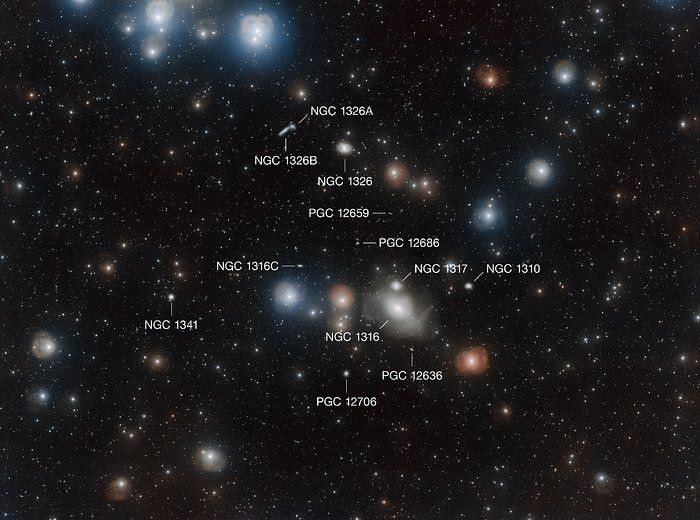ESO Telescope Captures Stunning Image Of NGC 1316 In Fornax Galaxy Cluster

A massive new image of the Fornax Galaxy Cluster has revealed a system of delicate loops, arcs and rings in the NGC 1316, a lenticular galaxy in this cluster.
According to the report on the European Southern Observatory (ESO) website, NGC 1316 has had a very turbulent past. Astronomers say that the image they captured using the VLT Survey Telescope at ESO’s Paranal Observatory in Chile has shown the galaxy in never-seen-before detail. "This astonishingly deep image also reveals a myriad of dim objects along with faint intracluster light," the report added.
This in-depth view reveals the hidden intricacies of the luminous members of the Fornax Cluster. The cluster is known as one of the richest and closest galaxy clusters to the Milky Way. This 2.3-gigapixel image is one of the largest images ever released by ESO.
The image shows NGC 1316, which is the most widely known of all the galaxies in this cluster. As a galaxy that has experienced a dynamic history, it was formed by the merger of multiple smaller galaxies. "The gravitational distortions of the galaxy’s adventurous past have left their mark on its lenticular structure," says the report. A lenticular structure is associated with a "lens-shaped" galaxy which is in an intermediate form between diffuse elliptical galaxies and the better-known spiral galaxies such as the Milky Way.
"Large ripples, loops and arcs embedded in the starry outer envelope were first observed in the 1970s, and they remain an active field of study for contemporary astronomers, who use the latest telescope technology to observe the finer details of NGC 1316’s unusual structure through a combination of imaging and modeling," said the report.
Several galaxies merged to form NGC 1316. This, however, led to an influx of gas. These gases are known to fuel supermassive black holes with a mass roughly 150 million times that of the Sun. One such supermassive black hole helped give this galaxy its exotic shape, the report said. Black holes accrete mass from their surroundings. "These cosmic beings produce powerful jets of high-energy particles that in turn give rise to the characteristic lobes of emission seen at radio wavelengths, making NGC 1316 the fourth-brightest radio source in the sky," said the report.
NGC 1316 has witnessed four recorded type Ia supernovae, which cause massive changes in the space around them. Studying supernova in a galaxy can reveal several important specifics about the positioning and type of the galaxy. They have a very clearly defined brightness and can be used to measure the distance to the host galaxy. NGC 1316 is at a distance of 60 million light-years from Earth.
"These standard candles are much sought-after by astronomers, as they are an excellent tool to reliably measure the distance to remote objects. In fact, they played a key role in the groundbreaking discovery that our Universe is expanding at an accelerating rate," said the report.
This image has given us visual proof of the effects of la supernovae in early galaxy formation. The team, led by Enrichetta Iodice, INAF – Osservatorio di Capodimonte, Naples, Italy, have previously observed this area with the VST and revealed a faint bridge of light between NGC 1399 and the smaller galaxy NGC 1387. The image shows us the impact supernova have on galaxies and also gives us a new in-depth image of the Fornax Galaxy Cluster.
© Copyright IBTimes 2024. All rights reserved.











